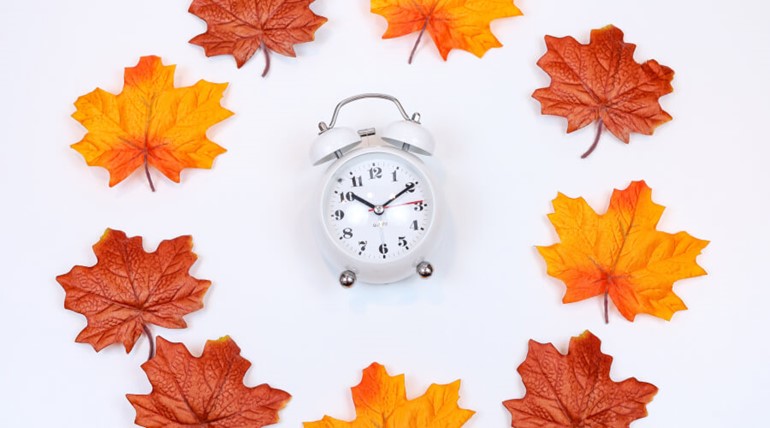Daylight Savings Time in Canada

Alisha Sevigny | November, 2, 2021
What is Daylight Savings Time? (DST)
New students to Canada may be wondering what exactly daylight savings time is, while others might be familiar with the concept from their own countries. In any case, twice a year in Canada we move our clocks back an hour in the fall and then forward again in the spring. To some people it might seem like an unnecessary, outdated process, but this time change was meant to maximize our light on those dark winter mornings, and to increase our daylight hours in the warm summer evenings.
If you’re confused about which way to move your clock, here is an easy trick to help you remember: in November our clocks “fall back” an hour, and in March they “spring forward” an hour (technically at 2am, so make sure to change the time before you go to sleep!). Your smartphone, tablets and computers will automatically do this for you. But if you have any clocks that are not connected to the internet, such as the one on your stove or microwave, in your Niagara College - Toronto classroom and building, or even an old-fashioned alarm clock by your bedside table, this will have to be done manually.
The History of Daylight Savings
Love it or hate it, Canada was the first place to implement Daylight Savings Time! It spread from Thunder Bay, Ontario (1908) to other provinces such as Regina and Saskatchewan (1914). DST was popularized by Germany and Austria during the war, where it quickly spread across Europe. Some sources credit one of the US’s founding fathers, Benjamin Franklin, for being the first to suggest seasonal time change, but he actually meant it as a joke. Franklin wrote a letter to the editor of the Journal of Paris claiming that Parisians could conserve their candle use by getting out of bed earlier in the morning to save energy.
We hate to break it to Ben, but ancient civilizations can take the original credit for the idea. For example, water clocks designed by the Romans were adjusted to account for solar time. However, a New Zealand Scientist named George Hudson and a British builder named William Willet were instrumental in bringing daylight savings time into the modern age. Willet actively appealed to the government, despite being met with ridicule, but unfortunately died the year before DST came into effect in the UK. It is not known if he ever knew that a small town in Canada had started using daylight savings time seven years before his death.
Nowadays, this phenomenon affects over one billion people every year, in over 70 countries worldwide, though each country has their own individual dates.
How will you use the extra hour you gain this upcoming Novermber 7? Exercise and meditation? More time spent studying? Or will you cozy under the blanket for another hour of sleep?
If you plan on using your hour to research post-secondary options in Canada, look no further and reach out to us at info@niagaracollegetoronto.ca; we are happy to answer all of your questions about our fantastic programs and new campus in the center of one of the best countries in the world!
Recent Blogs
December, 17, 2024
November, 15, 2024
September, 17, 2024
June, 17, 2024
May, 21, 2024
April, 22, 2024
Enhancing your learning experience by joining student clubs!
March, 25, 2024
Advance in Your Career: The Benefits of Continuing Education
March, 11, 2024
February, 26, 2024
